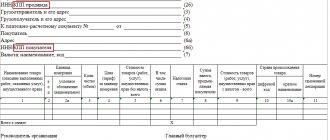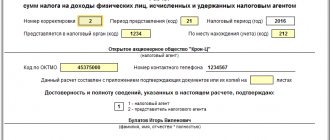Terms of consideration
Conflicts in the field of labor relations fall into the category of civil cases that must be considered by the court within 2 months from the date of the plaintiff’s appeal. This is established by paragraph 1 of Art. 154 Code of Civil Procedure of the Russian Federation . But the second paragraph of this article provides for the possibility of reducing the time for consideration of the case - if the issue concerns reinstatement at the place of work, the court is given no more than a month to make a decision.
After considering the essence of the labor dispute, it will also take time for the rendered conclusion to enter into legal force. But you won’t always have to wait; for example, verdicts on reinstatement or payment of wages come into force immediately (Article 211 of the Code of Civil Procedure of the Russian Federation).
But other disputes, although they will be resolved, the court’s conclusions will not take effect until the period for filing an appeal has expired. An appeal or complaint must be sent to the court within a month from the date of the verdict (Article 321 of the Code of Civil Procedure of the Russian Federation):
- If the disputant does not file an appeal, then after this month the decision will take effect.
- If a complaint is filed, the court may consider the appeal for another two months.
As a result, the total time spent on considering the case, obtaining a verdict and its entry into force can reach 5 months, and taking into account the timing of notification of the parties to the conflict and the delay of postal items, up to six months. Therefore, it is important to understand that the resolution of a banal conflict may ultimately take a long time.
Not only can a conflict with an employer be resolved in court; applications describing the problems are also accepted by the labor dispute commission. is obliged to consider a complaint from an employee within 10 days Another 10 days are given to appeal the decision made by the other party to the conflict. After this, after 3 days, the resolution will come into force. It will take 23 days in total, but it’s not always easy to get what you want.
If the employer does not comply with the commission’s recommendations, the employee can receive a certificate indicating the actions to be taken within a month from the date of its adoption; this document must be used to get what he wants.
The employee applies with this certificate to the bailiffs within 3 months from the moment it was in the hands of the victim, and they forcibly seek execution of the decision on the considered labor dispute. These deadlines can be extended for reasons recognized as valid, if the former employee was unable to contact the enforcement service on time or receive documents in hand.
Article 388. The procedure for making a decision by the labor dispute commission and its content
The labor dispute commission makes a decision by secret ballot by a simple majority of votes of the commission members present at the meeting.
The decision of the labor dispute commission shall indicate:
the name of the organization or the surname, name, patronymic of the employer - an individual entrepreneur, and in the case when an individual labor dispute is considered by the labor dispute commission of a structural unit of the organization - the name of the structural unit, surname, name, patronymic, position, profession or specialty of the employee who applied to the commission ;
dates of application to the commission and consideration of the dispute, the substance of the dispute;
last names, first names, patronymics of commission members and other persons present at the meeting;
the essence of the decision and its justification (with reference to the law, other regulatory legal act);
Voting results.
Copies of the decision of the labor dispute commission, signed by the chairman of the commission or his deputy and certified by the seal of the commission, are handed over to the employee and employer or their representatives within three days from the date of the decision.
Statute of limitations
It is possible to achieve a resolution of a case in case of problems at work only within a certain time period - the statute of limitations or, as it is also called, the period for contacting the relevant authorities to resolve a labor dispute. There is a difference in the duration of this period for different categories of participants in labor relations.
For employee
Labor legislation provides for the use of a shortened statute of limitations for this category of disputes. If the standard period for going to court in civil cases is 3 years, then the employee, in accordance with Article 392 of the Labor Code of the Russian Federation, must more quickly complain about the actions of the employer:
- within 1 month after receiving the work book when leaving work or after delivering the dismissal order - if the case concerns violations and unlawful actions when dismissing an employee;
- within 3 months from the moment when he should have identified the fact of violation of his own rights or directly learned about it - for all other categories of disputes.
A similar duration is established when applying to another authority involved in the settlement of such cases. According to Article 386 of the Labor Code of the Russian Federation, you must also contact the Labor Dispute Commission within 3 months from the date of identification of controversial issues in the employee-employer relationship.
For the employer
If an employer seeks to resolve existing disagreements with an employee, then this situation also has its own deadline for appeal. In particular, a company or entrepreneur can sue an employee (to receive financial compensation for the damage caused) within 1 year from the moment the damage was discovered.
Petition
The offended employee is not given much time to come to his senses and identify violations, and then restore justice. But this can be solved.
The court will accept the statement of claim even after this time has expired ; however, the employer, who is the other party to the conflict, may file a petition to apply the statute of limitations on labor disputes.
This will require the plaintiff to indicate the reasons that led to the impossibility of filing a lawsuit in a timely manner.
If the judicial authority accepts these explanations and recognizes them as a valid reason, then the case will be considered. If the employee cannot prove the existence of adequate grounds for postponing the application period, his claim will be denied. Read more about which court hears labor disputes.
How long does it take to go to court to resolve an individual labor dispute?...
Question for a lawyer:
Head of the organization (Chairman of the HOA):
— On March 1, 2011, I wrote a letter of resignation.
— On April 1, 2011, he signed an order for his own dismissal (clause 3, part 1, article 77 of the Labor Code)
He did not respond to the request for the transfer of documents.
The new chairman filed a claim for the return of documents, and the dismissed one filed a claim on March 1, 2012. filed a counterclaim for reinstatement in connection with non-payment (upon dismissal) of compensation for unused vacation for 2008 - 2011.
QUESTION. In this case, do we apply the three-month period for applying to court for an employee, established by Part 1 of Article 392 of the Labor Code of the Russian Federation?
Thank you, Evgeniy
Lawyer's answer to the question: time limits for consideration of labor disputes in court Evgeniy, yes, it is applicable.
The fired chairman will have his claim denied.
Sincerely, -----------------------
Features of the limitation period
Violations in matters of payment of wages are ongoing , and the need to take into account the statute of limitations in such cases confuses not only the workers themselves, but also representatives of the labor commission and even the judicial authorities.
If the employer systematically incorrectly calculated and paid wages and other payments, can one complain only about violations in the last three months or for the entire period of employment?
There are several provisions for accounting for statute of limitations on this issue, taking into account when the employee learned about the violation of rights, and the court may take into account:
- Circumstances preceding dismissal - thus, the starting point may be the date of the general meeting at which the decision was made to terminate the powers of the hired employee.
- The day of dismissal when going to court to collect wages.
- The day of payment upon dismissal, if the payment was received not on the day of departure, but later.
- The day the delay in cash payments occurs - if the contract provides for the payment of wages by the tenth of each month, then on the 11th the employee learns of the violation.
- If the employer refuses to pay the due funds (deposited salary), and while the boss feeds “breakfast”, the court may not count this time towards the statute of limitations.
- Whether a dismissal has occurred and whether unpaid wages have been accrued, if not, then such an employment relationship is considered ongoing, so you can go to court at any time until the wages are paid and the employee is finally dismissed.
The judicial authorities adhere to different positions in various labor disputes regarding the recovery of wages and can accept a three-month period from any of the above dates as the statute of limitations for filing a claim. It all depends on the specific circumstances of the case and the evidence presented and the grounds for restoring the deadline for filing a complaint or application.
Article 394. Making decisions on labor disputes regarding dismissal and transfer to another job
If dismissal or transfer to another job is recognized as illegal, the employee must be reinstated in his previous job by the body considering the individual labor dispute.
The body considering an individual labor dispute makes a decision to pay the employee the average salary for the entire period of forced absence or the difference in earnings for the entire period of performing lower-paid work.
At the request of the employee, the body considering an individual labor dispute may limit itself to making a decision to recover in favor of the employee the compensation specified in part two of this article.
If the dismissal is declared illegal, the body considering the individual labor dispute may, at the request of the employee, decide to change the wording of the grounds for dismissal to dismissal of one’s own free will.
If the wording of the grounds and (or) reasons for dismissal is recognized as incorrect or not in accordance with the law, the court considering an individual labor dispute is obliged to change it and indicate in the decision the grounds and reasons for dismissal in strict accordance with the wording of this Code or other federal law with reference to the relevant article , part of an article, paragraph of an article of this Code or another federal law.
If the dismissal is declared illegal and the term of the employment contract has expired at the time the dispute is being considered by the court, then the court considering the individual labor dispute is obliged to change the wording of the grounds for dismissal to dismissal upon expiration of the employment contract.
If, in the cases provided for by this article, after declaring the dismissal illegal, the court makes a decision not to reinstate the employee, but to change the wording of the grounds for dismissal, then the date of dismissal must be changed to the date of the court’s decision. If, by the time the said decision is made, the employee, after a contested dismissal, has entered into an employment relationship with another employer, the date of dismissal must be changed to the date preceding the day of commencement of work for this employer.
If the incorrect formulation of the grounds and (or) reasons for dismissal in the work book or information about work activity (Article 66.1 of this Code) prevented the employee from taking another job, the court decides to pay him average earnings for the entire period of forced absence.
In cases of dismissal without legal grounds or in violation of the established procedure for dismissal or illegal transfer to another job, the court may, at the request of the employee, make a decision to recover in favor of the employee monetary compensation for moral damage caused to him by these actions. The amount of this compensation is determined by the court.







